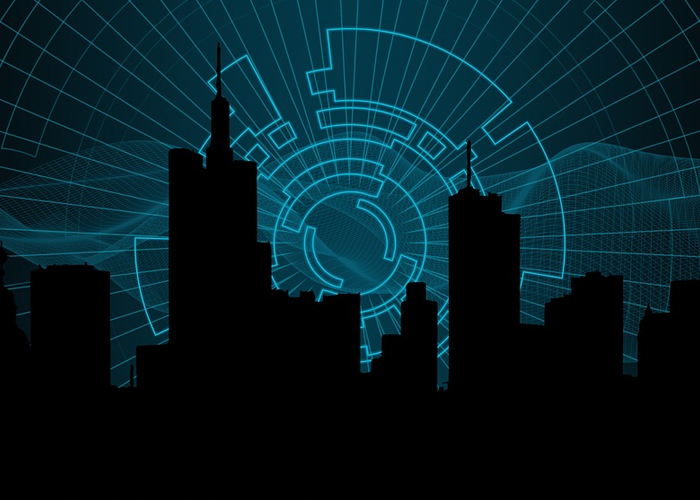Adam Greenwood-Byrne, CEO at RealVNC, examines how emerging technologies will impact business processes across a range sectors.
It is well known that robots will replace a number of human jobs, with a recent McKinsey report suggesting that by 2030, intelligent agents and robots could eliminate up to 30% of the world’s human labour, but what is less discussed is how automation will actually change many traditional human jobs and workplaces for the better.
Machine learning has already began to improve human decision-making and the rising use of IoT and remote access technology in the workplace will enable humans to influence faraway people and events by being ‘present’ in multiple devices and locations.
The increasing use of these technologies to analyse, identify and respond to changing trends in real-time will make human workers digitally omnipresent across departments, businesses, factories and devices. The ability to have foresight on processes will consequently change many roles from reactive and routine-based to analytical and strategic. While machines take over routine tasks, humans will be able to focus more on having a bird’s-eye-view on whole processes.
Here are five ways that the human workforce will be transformed by emerging technologies in the next decade:
- Workers will be digitally omnipresent
Technologies such as the ability to ‘remote in’ to a wide array of devices – from smartboards to industrial robots – will break down traditional silos of expertise and allow organisations to share live data and insights across multiple locations. Workers will be able to work remotely more effectively and be in multiple places at once.
Remote access technology has already allowed customer service agents to remotely access and fix smart TVs, and even enable technicians to remotely re-calibrate medical imaging equipment on cruise ships or connect into satellite control stations.
Now the technology is being extended beyond technical support to other functions, from virtual training to cross-departmental oversight and collaboration. Companies could increasingly deploy remote access technology to allow one department to ‘remote in’ to interactive white boards or Augmented Reality headsets in other departments and collaborate on multinational, cross-departmental projects. Legal teams can remotely access staff devices in any location to oversee and enforce compliance. In future, business customers will even be able to access remote, overseas machines to conduct virtual training on real equipment in training labs.
The rise of ubiquitous remote access technology will mean every department, from legal to HR to accounts, will be able to more easily teach and learn from other departments, turning organisations into more tight-knit, cohesive units. This is set to unite organisations, bringing together business units, departments and divisions in a way never previously possible.
Peter Ryding, CEO of e-coaching system Vic Your Coach, recently said:
“Technology is opening up workplaces, enabling people to work from anywhere and also opening up opportunities for staff, not just leaders. The AI built into Vic Your Coach allows me to deliver the same one on one, personalised mentoring and coaching that I have delivered tp CEOs for many years without the need to for me to be physically present or even physically involved. The biggest benefit of this is that it can be used to affordably upskill all members of the team, not just the CEO, and can be accessed on any device with internet access.”
- Organisations will be more transparent and workers multi-functional
Staff will also be able to fulfil more cross-sector, strategic roles. This will be facilitated by technology that will enable employees to ‘remote in’ to a wide range of other departments, divisions and devices and ‘be where they are not’.
The expansion of IoT to encompass much of the modern workplace – from the factory floor to the office – will see the deployment of remote access technology as a tool for everything from remote industrial maintenance to cross-departmental ‘virtual training’. Remote access will give managers the ability to remotely control a vast industrial IoT assembly line, giving industrial managers the power to influence and oversee entire end-to-end supply chains in real-time. This will be combined with AI systems that will autonomously monitor production processes and aid predictive maintenance, enabling workers, such as engineers and technicians, to make smarter and more strategic technical interventions.
Organisations will become more transparent when people and data from every department and division are instantly available in other places. If HR or legal staff can ‘remote in’ to business travellers’ devices to monitor expenses claims for compliance, it could make corporate hospitality more transparent and even reduce potential problems like bribery.
- IT staff become tech strategists
Remote access technology will transform the traditional IT manager role from a purely technical job spec to one with responsibility for bringing together people and data from all departments in pursuit of wider business objectives. Data will power the digital economy and the most important people in companies will be those that understand how to extract commercial value from data to fuel business processes. This will elevate IT managers from pure ‘techies’ into ‘technology strategists’ responsible for the sharing of information across departments to drive innovation.
IT managers will also be responsible for organising and storing the company’s data in a way that makes it commercially valuable and useable to train the machine learning algorithms that fuel future business processes. This has the potential to transform the role of IT manager into a board-level one.
- Customer service agents will be transformed by AI and remote access
Developments in AI and remote access are set to transform the human customer service agent into a more wide-ranging and effective role. Customer service agents will have much greater responsibility and influence as remote access technology allows them to enter any connected device without physically being there. Future call centres will therefore be composed of multi-skilled teams required to perform complex and multi-faceted tasks in each industry sector.
Customer support agents or technicians might be required to remote in to and fix a smart traffic light, combat a live cyber-attack on a train, or fix IoT equipment on an Industry 4.0 factory floor. Customer service agents will increasingly be educators, sales people, and consultants, required to ‘remote in’ to customers’ homes or businesses and provide training and maintenance or up-sell new products.
A virtual customer service agent and a human call-centre worker will, in future, work together to solve more problems at greater speed. For example, a machine-learning system could identify real-time patterns in customer service requests, such as more people reporting cyber-attacks in a certain location, enabling human technical support staff to target their resources more effectively. This will create more efficient and effective customer service agents with greater insight and foresight.
- Finance and legal teams will have more power
Similarly, finance and legal managers will have the opportunity to be far more strategic, influential, and to make their outputs effective. Finance managers will be able to ‘remote in’ to a PC in accounts retrievable and legal teams will similarly be able to access a PC in another department to assist with compliance issues in real-time. Machine learning algorithms will be able to monitor data to identify patterns (such as people seeking certain types of legal support after a recent legal change) that will enable them to predict and prevent potential problems.
With greater power, they will have more responsibility for policing compliance with everything from data-privacy laws to new financial regulations.
The outcome will be that they will have increasingly cross-sector roles and responsibilities, and greater power and influence. Just as IoT has merged previously separate sectors such as the aerospace and software industries, it will now merge previously separate business departments and divisions. Traditional silos will be dissolved and knowledge will spread further and faster than ever before. The ability for humans to be digitally omnipresent across all connected devices will give everyone – from company lawyers to finance managers – greater power and influence, and foster closer cross-departmental collaboration and learning.


